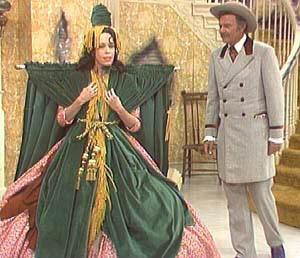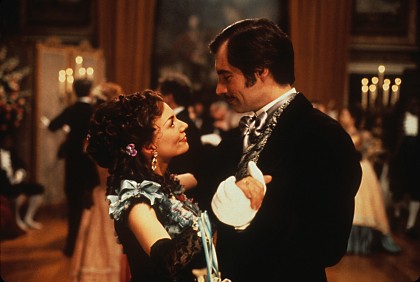In a new Friday series, I’ll be combining two of my favorite things, reading and cooking. That probably means there will also be discussion of more than a few books made into movies. Please, gentle adult readers, do not be offended to learn that the genesis of the name Bookin’ and Cookin’ comes from a summer school class I taught several years ago. It was really fun, and I hope this series will be both fun to write and fun to read!

They say that writers should write about what they know, and perhaps that it is reason for the enduring success of Margaret Mitchell’s only novel, Gone With the Wind . Set during the turbulent Civil War and Reconstruction in the American South, Mitchell’s Pulitzer Prize winning story is populated by unforgettable characters that appear to have been loosely modeled on Mitchell and her circle of friends and family.
. Set during the turbulent Civil War and Reconstruction in the American South, Mitchell’s Pulitzer Prize winning story is populated by unforgettable characters that appear to have been loosely modeled on Mitchell and her circle of friends and family.
The book’s first paragraph gives the reader a full hit of Mitchell’s amazing ability to create searing images. The entire text is available for free online at the Gutenberg Press if you want to stop right now and read the novel. Beware — it’s addictive.
Scarlett O’Hara was not beautiful, but men seldom realized it when caught by her charm as the Tarleton twins were. In her face were too sharply blended the delicate features of her mother, a Coast aristocrat of French descent, and the heavy ones of her florid Irish father. But it was an arresting face, pointed of chin, square of jaw. Her eyes were pale green without a touch of hazel, starred with bristly black lashes and slightly tilted at the ends. Above them, her thick black brows slanted upward, cutting a startling oblique line in her magnolia-white skin–that skin so prized by Southern women and so carefully guarded with bonnets, veils and mittens against hot Georgia suns.
Although the book has been widely criticized for its one-sided look at the institution of slavery and the plantation society, there is a reason why it is one of the most read (and reread) novels ever written. Not only did it win the Pulitzer Prize, and was made into an Academy Award winning blockbuster movie, but it has also been followed up with sequels. These include Alexandra Ripley’s Scarlett: The Sequel to Margaret Mitchell’s “Gone With The Wind”  , Donald McCaig’s Rhett Butler’s People
, Donald McCaig’s Rhett Butler’s People , and Alice Randall’s parody, The Wind Done Gone: A Novel (Hardcover)
, and Alice Randall’s parody, The Wind Done Gone: A Novel (Hardcover) . I have read all of these books and although they never achieve the greatness of the original, for the Scarlett devotee, they present something new to think about. Gone with the Wind was also spoofed in a famous Carol Burnett television show episode. Have you ever seen the curtain dress?
. I have read all of these books and although they never achieve the greatness of the original, for the Scarlett devotee, they present something new to think about. Gone with the Wind was also spoofed in a famous Carol Burnett television show episode. Have you ever seen the curtain dress?

Mitchell’s unforgettable dialogue has become part of legend and everyday conversation. Even my husband says “Mrs. O’Hara will know what’s to be done” when referring to a dilemma. And how many of us have uttered the famous words of Rhett Butler — “Frankly, my dear, I don’t give a damn”? That leads us to perhaps the most dramatic scene in the movie, which occurs at the end of the first act. After risking her life to travel home to Tara during the fall of Atlanta to Sherman, Scarlett finds that there is nothing in the garden but fiery hot overgrown radishes. Sherman’s army has taken everything. Scarlett says, “As God is my witness, as God is my witness, the Yankees aren’t going to lick me. I’m going to live through this, and when it’s over, I’m never going to be hungry again. No, nor any of my folks. If I have to steal or kill–as God is my witness, I’m never going to be hungry again.”

Although I didn’t have overgrown, nasty radishes in my garden, I was given the mother of all zucchini the other day (Actually, I got TWO zucchinis this size!). Perhaps if Scarlett had found a zucchini the size of Rhett’s thigh instead of radishes, she would not have become the folk hero that she is. It’s all in how we write our story and how we use what we are given. When I took the photo, I put in the Triscuit box so that you could see how enormous the zucchini was by comparison.

To start with, I chopped up the zucchini and ran it through the food processor. Then I put 2 cups of the chopped zucchini into labeled zip lock baggies for freezing. The enormous zucchini made 5 two-cup bags, which is enough for 10 loaves of zucchini bread.

So, here’s a tip worthy of Scarlett. Use up the last of your summer bounty by freezing it for winter treats. You’ll love this recipe!

Bon Appetit!












